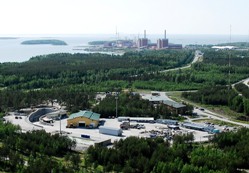 Bruce Yardley (Chief Geologist, Radioactive Waste Management Ltd) on the new White Paper on the geological disposal of radioactive waste.
Bruce Yardley (Chief Geologist, Radioactive Waste Management Ltd) on the new White Paper on the geological disposal of radioactive waste.
The UK government has taken the next step towards constructing a Geological Disposal Facility (GDF) for High Level and Intermediate Level Radioactive Waste, with the publication in July of a new White Paper: ‘Implementing Geological Disposal’, available at:
www.gov.uk/government/uploads/system/uploads/attachment_data/file/332890/GDF_White_Paper_FINAL.pdf
Earlier policy developments were summarised in these pages recently by Peter Styles (Geoscientist 24.3 April 2014) and led to a process laid out in a 2008 White Paper ‘Managing Radioactive Waste Safely’. This process was initiated by local councils volunteering to host a GDF and proceeded by staged technical assessments. A number of failings in the process became apparent after it came to end last year in Cumbria, and the new process is intended to address these. It is the result of an extensive public consultation, to which the Geological Society contributed.
Principles
The original principles remain. The safety case for a GDF must take into account the geological setting and the interactions of the GDF with the surrounding geosphere, and the local community must have actively volunteered to host the site and retain the right to withdraw; but geological evaluation is now a priority from the outset. The Government’s emphasis on this is a result of the widespread demand for geological information to be available before communities are invited to volunteer.
In particular, the White Paper sets out an initial action for Radioactive Waste Management Limited (RWM), now identified as the developer, to carry out a National Geological Screening Exercise. This aims to make geological information available in an accessible form to communities so that they can address questions about their geological potential at an early stage. It also proposes that GDFs are brought within the definition of ‘Nationally Significant Infrastructure Projects’ and requires DECC to develop a generic National Policy Statement to support the planning process. A third action is to develop guiding principles for working with communities - how decisions are made, how communities are represented, what would be an appropriate test of public support, and how community investment should be distributed.
 Picture: Olkiluoto, Finland – the repository entrance is in the foreground. Picture: Posiva Oy
Picture: Olkiluoto, Finland – the repository entrance is in the foreground. Picture: Posiva Oy
The National Geological Screening Exercise is a response to evidence from the Society and others who have argued for a number of years that it is important to provide more information on geology at depth before encouraging communities to volunteer, because geology is fundamental to a GDF safety case. In recognition of the importance of communicating with the public and ensuring that the process is open and transparent, the screening exercise will include a consultation on the “screening guidance”. RWM will assemble its own team, including outside experts, to develop guidance for screening, i.e. identify widely available parameters which appear to be useful for assessing the potential of a site for a GDF, such as mapping the distribution of rocks with specific properties occurring at appropriate depths in the subsurface, or of non-potable groundwaters, structural features etc.
It must be possible to evaluate these parameters over a significant part of the country purely from desk studies. The RWM team plans to consult widely with the geological community and other interested groups to gather input, including a meeting at Burlington House on September 30, and regional meetings. At the same time, DECC has asked the Geological Society to set up an independent review panel to peer review the quality and applicability of the work that RWM proposes.
Benefits
Only when this process is complete will the guidance be applied across England, Wales and Northern Ireland. Again, the process will be overseen by the independent review panel. The outcome, expected late in 2016, will include maps and accompanying narrative, showing the distribution of features - some positive and some negative - that may be of relevance. There will be no ‘magic bull’s-eye’, but there will be a sound basis for discussions with communities who might wish to take advantage of the undoubted economic and employment benefits that a GDF will bring, so that they can establish with greater certainty whether their area is likely to be viable before expending needless time and effort.
Even by the standards of major infrastructure projects, the timescale for constructing a GDF in the UK is long, and many issues still remain to be resolved. The challenge will be to ensure that we remain on track to finally and safely dispose of our radioactive waste. Here the involvement of the geological community, which recognises the importance and viability of geological disposal more than any other group, will be of enormous value.